SOME OF THE BEST VENTRILOQUIST AND PUPPETEERS OF YESTERDAY.

The first, and still the best of the best will always be. Jim Henson. This is a little information that I found on this great man.
Date of Birth
24 September 1936, Greenville, Mississippi, USA
Date of Death
16 May 1990, New York City, New York, USA (bacterial pneumonia)
Birth Name
James Maury Henson
Height
6' 3" (1.91 m)
Mini Biography
Jim Henson never thought that he would make a name of himself in puppetry; it was merely a way of getting himself on television. The vehicle that achieved it was "Sam and Friends" (1955), a late-night puppet show that was on after the 11:00 news in Washington DC. It proved to be very popular and inspired Jim to continue using puppets for his work. He made many commercials, developing the signature humor that Henson Productions is known for. A key reason for the success of his puppets is that Jim realized he didn't need to hide puppeteers behind a structure when they were in front of a camera. All he had to do was instruct the camera operators to focus on the puppets and keep the puppeteers out of the frame. This allowed the puppets to dominate the image and make them more lifelike. This work on puppets and television would lead to separate projects that had different goals. The first one was his work on the "The Jimmy Dean Show" (1963) with the character Rowlf the Dog, the oldest clearly identified character that Henson Productions still uses. This show provided an income that allowed Jim to work on a pet project. That project was Time Piece (1965), a surrealistic short about time which was nominated for best live-action short Oscar. Henson shot to prominence when he was approached to use his muppets for the revolutionary educational show "Sesame Street" (1969). The show was a smash hit and his characters have become staples on public television. Unforetunately, this also led to Henson being typecast as only an entertainer for children. He sought to disprove that by being part of the initial crew of "Saturday Night Live" (1975), but his style and that of the creative staff simply didn't jibe. It was this circumstance that encouraged him to develop a variety show format that had the kind of sophisticated humor that "Sesame Street" didn't work with. No American broadcaster was interested, but British producer Lew Grade was. This led to "The Muppet Show" (1976). It initially struggled both in the ratings and in the search for guest stars, but in the second season it became a smash hit and would eventually become the most widely watched series in television history. Hungry for a new challenge, Henson made The Muppet Movie (1979), defying the popular industry opinion that his characters would never work in a movie. The film became a hit and spawned a series of features which included the moody fantasy The Dark Crystal (1982), which was a drastic and bold departure from the amiable tone of his previous work. The most successful TV work in the 1980s was "Fraggle Rock" (1983), a fantasy series specifically designed to appeal to as many cultural groups as possible. During this time he also established the Creature Shop, a puppet studio that became renowned for being as brilliant with puppetry as ILM was at special effects. When he died all too soon in 1990, he was indisputably one of the geniuses of puppetry. More importantly, he was a man who achieved his phenomenal success while still retaining his social conscience and artistic integrity as his work in promoting environmentalism and his brilliant "The Storyteller" (1988) series respectively attest to.
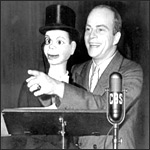
Edgar Bergen and Charlie McCarthy.
Ventriloquist Edgar Bergen developed his Charlie McCarthy characterization while attending high school, basing his alter ego on a brash Irish newsboy named Charlie who sold papers on a Decator street corner. Bergen sketched the newsboy inside his history book and paid part-time woodcarver Theodore Mack to sculpt a ventriloquism dummy head out of a block of white pine. Bergen performed with the dummy while attending Northwestern University and eventually left college to tour vaudeville. With the decline of vaudeville during the Great Depression, Bergen moved into night spots like Chicago’s fashionable Chez Paree and New York’s trendy Rainbow Room but feared his newsboy friend wouldn’t be appreciated by high society: "We were booked to play the Helen Morgan Club in New York," he recalled, "and I didn’t think a newsboy was quite the thing for a nightclub. I asked Esquire if I could make a dummy out of their mascot, ‘Esky.’ At first they thought it was a good idea but then they changed their minds . . . so there was nothing left to do except to make Charlie the ‘man about town,’ and that’s how he got his monocle, top hat and tails." Following a three-month guest stint on Rudy Vallee’s Royal Gelatin Hour, Edgar Bergen was signed as headliner of The Chase and Sanborn Hour. The series premiered May 9, 1937 and ended the next three seasons as radio’s top-rated series.
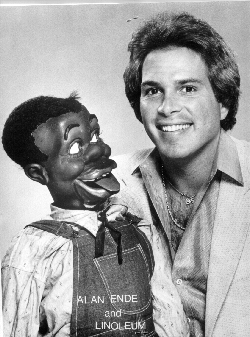
Few fans remember that the great crooner of the 20's and 30's, Rudy Vallee, was a ventriloquist buff. He owned three figures made by the McElroy Brothers. These were the Rolls Royces of the trade. Each McElroy figure would have up to 13 different animations, including rolling, winking, crossing eyes, raising brows, flapping, movable tongue, wiggling nose, and raising wig, as well as smoking and other effects.
Rudy Vallee used a black figure named Linoleum, and a girl figure named Sally Ann. Ende purchased both of the dolls directly from Vallee, and Vallee was able to refer him to a number of other ventriloquial collectibles that have since become part of his collection. Linoleum has 16 mechanical movements, and is considered by many to be the finest figure ever made. Ende adds, "Linoleum is my personal favorite, and the number one highlight of my collection."
He continues, "I also own figures from all over the world, including England, Austria, and Mexico. Each area features its own unique characteristics"
THE HOWDY DOODY SHOW

THE HOWDY DOODY SHOW
The Howdy Doody Show
CAST
Buffalo Bob Smith ...................................Bob Smith Clarabelle Hornblow (Clown) .................Bob Keeshan
.....................................................Henry McLaughlin
........................................................ Bob Nicholson ..........................................................Lew Anderson Story Princess .....................................Arlene Dalton Chief Thunderthud ................................Bill Lecornec Tim Tremble........................................... Don Knotts Princess Summerfall Winterspring .............Judy Tyler .............................................................Linda Marsh Bison Bill (1954) ....................George "Gabby" Hayes Howdy Doody (voice) .................................Bob Smith Howdy Doody (voice, 1954) ........................Allen Swift Phineas T. Bluster (voice)...................... Dayton Allen Double Doody (voice)................................ Bob Smith The Flubadub (voice)............................ Dayton Allen Traveling Lecturer......................... Lowell Thomas, Jr.
PUPPETEERS
Rhoda Mann Lee Carney Rufus C. Rose
PRODUCERS
Martin Stone, E. Roger Muir, Simon Rady
PROGRAMMING HISTORY 2,543 Episodes NBC
December 1947-September 1960 Non-Primetime U.S. Childrens Program
The Howdy Doody Show was one of the first and easily the most popular children's television show in the 1950s and a reflection of the wonder, technical fascination, and business realities associated with early television. While Howdy and his friends entertained American children, they also sold television sets to American parents and demonstrated the potential of the new medium to advertisers.
The idea for Howdy Doody began on the NBC New York radio affiliate WEAF in 1947 with a program called The Triple B Ranch. The three Bs stood for Big Brother Bob Smith, who developed the country bumpkin voice of a ranch hand and greeted the radio audience with, "Oh, ho, ho, howdy doody." Martin Stone, Smith's agent, suggested putting Howdy on television and presented the idea to NBC televi-sion programming head Warren Wade. With Stone and Roger Muir as producers, Smith launched Puppet Playhouse on 17 December 1947. Within a week the name of the program was changed to The Howdy Doody Show.
Children loved the Doodyville inhabitants, because they were a skillfully created, diverse collection of American icons. The original Howdy marionette was designed by Frank Paris and in keeping with Smith's voice was a country bumpkin; however, in a dispute over licensing rights Paris left the show with the puppet. The new Howdy, who premiered in March 1948 was an all-American boy with red hair, forty-eight freckles (one for each state in the Union), and a permanent smile. Howdy's face symbolized the youthful energy of the new medium and appeared on the NBC color test pattern beginning in 1954.
Smith treated the marionettes as if they were real, and as a result, so did the children of America. Among the many unusual marionettes on the show was Phineas T. Bluster, Doodyville's entrepreneurial mayor. Howdy's grumpy nemesis, Bluster had eyebrows that shot straight up when he was surprised. Bluster's naive, high-school-aged accomplice, was Dilly Dally, who wiggled his ears when he was frustrated. Flub-a-dub was a whimsical character who was a combination of eight animals. In Howdy and Me, Smith notes, "Howdy, Mr. Bluster, Dilly, and the Flub-a-Dub gave the impression that they could cut their strings, saunter off the stage, and do as they pleased."
Although the live characters, particularly the native Americans Chief Thunderthud and Princess Summerfall Winterspring, were by modern standards stereotypical and often clownish, each had a rich heritage interwoven into the stories. These were prepared by Eddie Kean, who wrote the scripts and the songs until 1954, and Willie Gilbert and Jack Weinstock, who wrote scripts and song lyrics thereafter. For example, Smith (born in Buffalo, New York) was transformed into Buffalo Bob when he took his place in the story as the great white leader of the Sigafoose tribe. Chief Thunderthud (played by Bill LeCornec) of the mythical Ooragnak tribe ("Kangaroo" spelled backward) introduced the word "Kawabonga," an expression of surprise and frustration, into the English language. One of the few female characters in the cast was the beloved Princess Summerfall Winterspring of the Tinka Tonka tribe, who was first introduced as a puppet, then transformed into a real, live princess, played by Judy Tyler.
The Howdy Doody Show also reflected America's fascination with technology. Part of the fun and fantasy of Doodyville were crazy machines such as the Electromindomizer that read minds and the Honkadoodle that translated Mother Goose's honks into English. Television's technical innovations were also incorporated into the show. On 23 June 1949 split-screen capabilities were used to join Howdy in Chicago with Buffalo Bob in New York, one of the first instances of a cross-country connection. Howdy also ushered in NBC's daily color programming in 1955.
The Howdy Doody Show was immediately successful and was NBC's first daily show to be extended to five days a week. In 1952 NBC launched a network radio program featuring Howdy, and in 1954 Howdy Doody became an international television hit with a Cuban and a Canadian show, using duplicate puppets and local talent, including Robert Goulet as Canadian host, Timber Tom.
As amazing as it may now seem, there were published concerns over violent content in Howdy Doody, but though the action in Doodyville generally involved slapstick, parents generally supported the show. Much of the mayhem was perpetrated by a lovable, mischievous clown named Clarabell Hornblow. Clarabell was played by Bob Keeshan who later become Captain Kangaroo. His pratfalls were generally accidents, and the most lethal weapon on the show was his seltzer bottle. Moreover, educational material was consciously incorporated both into the songs and the stories; for example young viewers received a lesson in government when Howdy ran for President of the kids of America in 1948. The educational features of the program made the Doodyville characters attractive personal promoters both for the show and for the sale of television sets.
And even before the advent of the Nielsen ratings, Howdy Doody demonstrated its ability to draw an audience both for NBC and for possible advertisers. In 1948, children's shows were often provided as a public service either by the networks or the stations. When Howdy ran for President of all the kids, Muir suggested that they offer free campaign buttons. They received 60,000 requests, representing one-third of the American homes with television sets. Within a week their advertising time was sold out to major advertisers, such as Colgate Palmolive Peat Company. Although the producers were careful about what they advertised, they were very aggressive about marketing products they selected, incorporating product messages into songs and skits.
The producers also recognized the potential for merchandising. In 1949 the first Howdy Doody comic book was published by Dell and the first Howdy Doody record was released, selling 30,000 copies in its first week. There were also Howdy Doody wind-up toys, a humming lariat, a beanie, and T-shirts, among other licensed products.
Although extremely popular, the demise of The Howdy Doody Show demonstrated the financial realities of the new medium. In 1956 the early evening time slot became more attractive to older consumers, and the show was moved to Saturday morning. Although it continued to receive high ratings, the expense was eventually its downfall, and it was taken off the air on 24 September 1960, after 2,343 programs.
The most famous moment in the history of The Howdy Doody Show came during the closing seconds of the final show when Clarabell, who did not speak but communicated through pantomime and honking his horns, surprised the audience by saying, "Good-bye, kids." The reality continues to be that the rich, live-action performances that filled early children's programming are too costly for modern, commercial television. The show was briefly brought back to television as The New Howdy Doody Show in August 1976, but was canceled in January 1977, after only 130 episodes.
Lord Charles

Ventriloquist Ray Alan, famous for his act with monocled, upper-crust puppet Lord Charles, died suddenly in his sleep yesterday.
Alan, 79, was best known to millions of television viewers from the 1950s to the 1980s for his appearances on variety shows.
He also had his own children’s series, Tich And Quackers, featuring a schoolboy puppet and his pet duck.
The eyes have it: Ray Alan and Charles with the British boxer Charlie Magri, who tries out a monocle for himself at his gym in 1979
Lord Charles was inspired by a boozy toff spotted by Alan at a table during a cabaret show. He later based the puppet’s face on Stan Laurel, having performed with Laurel and Hardy on their last tour in 1954.
Alan once recalled: ‘I looked at Stan Laurel’s face and I thought "Good God, that’s the face I want – just change the hair and put a monocle on it".’
He was also a writer, publishing his third crime novel, A Fear Of Vengeance, earlier this year.
Alan, who is survived by his wife Jane, said of Lord Charles in 2006: ‘I’m not one of those ventriloquists who thinks he’s real. When I finish my work I put it back in the tool
box and I don’t take it out again until the next job.’
Asked if he ever felt upstaged by the puppet, he added: ‘I’m delighted to say yes! It’s just what I planned, I can sit back and say nothing and let him take the blame.’
Mister Rogers' Neighborhood
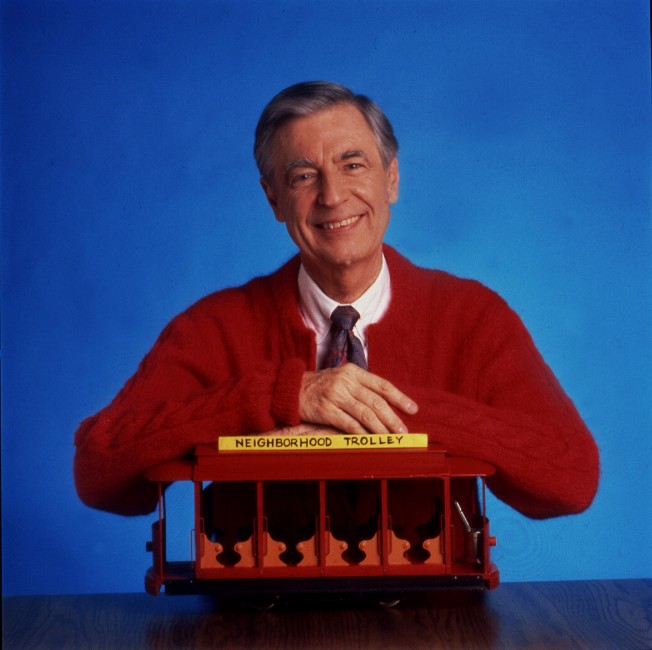
The last program in Mister Rogers' Neighborhood history, bows out in stoic fashion. Everyone in the Neighborhood of Make-Believe now knows that Lady Elaine is still brooding on that day long ago when somebody hurt her feelings. But when the time comes to "judge" all the artwork, Lady Elaine shows up not with a judgment, but with a collage of all the neighbors. It is Lady…rightful act of compassion toward those around her. Mr. McFeely, fittingly, is the last guest in Mister Rogers' television home. He and Mister Rogers share a video collage of artists in their various fields.
Cast and Crew
Stars
David Newell Mr. McFeely (a deliveryman; aka "Speedy Delivery")
Tony Chiroldes HulaMouse (Neighborhood of Make-Believe segments, 1999-2001), also runs Tony's Costume, Book, and Toy Shop
Maggie Stewart Mayor Maggie, the Mayor of Westwood
Mary Rawson Cousin Mary Owl, X the Owl's Cousin
Lenny Meledandri Puppet character Prince Tuesday (1987-2001)
Bill Barker Puppet characters Dr. Bill Platypus and Elsie Jean Platypus (1969-2001)
Guest Cast
Hilary Hahn Herself [file tape]
Bobby Rawsthorne Himself [file tape]
John Costa Himself [file tape from 1986]
Jaibin Pan Himself [file tape]
Ying Li Herself [file tape]
Wynton Marsalis Himself [file tape from 1986]
Recurring Roles
Fred Rogers Himself, puppet characters King Friday XIII, Queen Sara, Edgar Cooke, Cornflake S. Pecially, Henrietta Pussycat, X the Owl, Lady
Fred Rogers Recurring Role
Michael Horton (V) Puppet characters Betty Okonak Templeton (1983-2001), Old Goat (1984-1992), and James Michael Jones (1985-1994)
Betty Aberlin Lady Aberlin
Joe Negri Himself (owner of Negri's Music Shop); Handyman Negri (Neighborhood of Make Believe segments)
Audrey Roth Herself (aka Audrey Cleans Everything, or ACE); Miss Paulifficate (Neighborhood of Make Believe segments)
Chuck Aber Neighbor Aber, the Associate Mayor of Westwood (1981-2001); H.J. Elephant III (puppet character, 1975-2000)
Directors
Bob Walsh (II) Director
Camera Operators
Dave Foreman Camera Operator
Art Directors
Catherine Mc Connell Art Director
Production Designers
Kathryn Borland Production Designer
Make-Up Artists
Dianne Ulan Make-up Artist
Paul Winchell-Jerry Mahoney Show
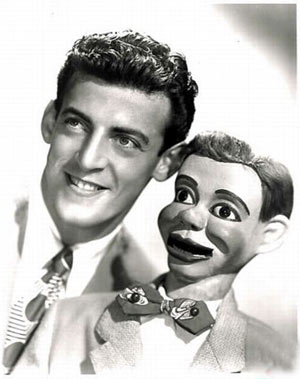
I remember a version of the Paul Winchell show when I was a kid. I'm guessing it was between 1963-1968. All I can picture in my mind are 3 things:
"One is the inside of a barn or something, with a big desk like thing that Jerry Mahoney & Knucklehead Smiff are sitting on/behind. There was also a slide that Jerry slid down into . . . maybe it was hay? And I also remember Jerry in a bed with a nightcap (the hat, not the drink) on his head and Paul is talking to him. I believe the show was in black-and-white unless it was just my TV.
"Please tell me I wasn't just dreaming this. I was a big Paul Winchell fan and I had a wild imagination as a kid."
- Frank Blefari
Long before he was the voice of 'Tigger' in the Winnie the Pooh series, Paul Winchell and his puppet pal Jerry Mahoney starred in many early TV programs; the first was on NBC in 1948 called The Bigelow Show. (1948 was the first year that the networks began programming seven nights a week; in fact, NBC had only 9 regular series on the air in 1947.)
On the series, ventriloquist Winchell and his hand-carved wooden dummy Jerry Mahoney introduced acts headlined by mentalist Joseph Dunniger. In 1949, this half-hour variety show proto-type moved to CBS, airing Wednesdays at 9:00 before being cancelled that same year.
Dan Horn
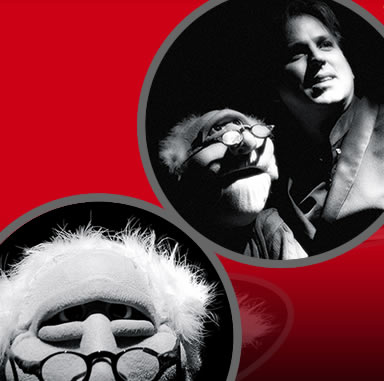
Here is one that i thought that every one would like. Rember this one?
Slappy from, R.L. Stine. Goosebumps. Is from Night of the Living Dummy.

Mr. Wood from, R.L. Stine. Goosebumps. Is from Night of the Living Dummy.
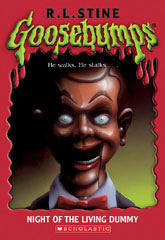
Slappy the Dummy is a fictional character in the Goosebumps children's series by R. L. Stine. He is one of the series' most popular villains, and the star of the series' most successful plot arc, the Night of the Living Dummy saga. Slappy is a ventriloquist's dummy that comes to life when the words "Karru marri odonna loma molonu karrano", found on a sheet of paper in his pocket, are read aloud. After coming to life, Slappy spends most of his time searching for a slave to serve him (usually the child who brought him to life). Slappy is shown to be a rude, sadistic control freak who likes to pull mean pranks and frames the main protagonist(s) in each book for them. Other defining characteristics are his raspy voice and near-superhuman strength. Stine has said, "I love writing Slappy because he is so rude."[1]
As revealed in "Bride of the Living Dummy", Slappy was carved out of coffin wood by an ancient sorcerer. "Slappy's Nightmare" reveals that he has a twin brother Wally, carved from the same coffin; however, this revelation is only a dream. When "Night of the Living Dummy" was re-released in a special Horrorland edition, bonus material included with the book revealed that Slappy did indeed have a brother: Mr. Wood, the primary antagonist of the book, and that the coffin wood they were made from was cursed. Mr. Wood's destruction made Slappy twice as evil, and a thousand times ruder.[2]
How could I ever leve out this one. From all the. Child's Play.
"Chucky"
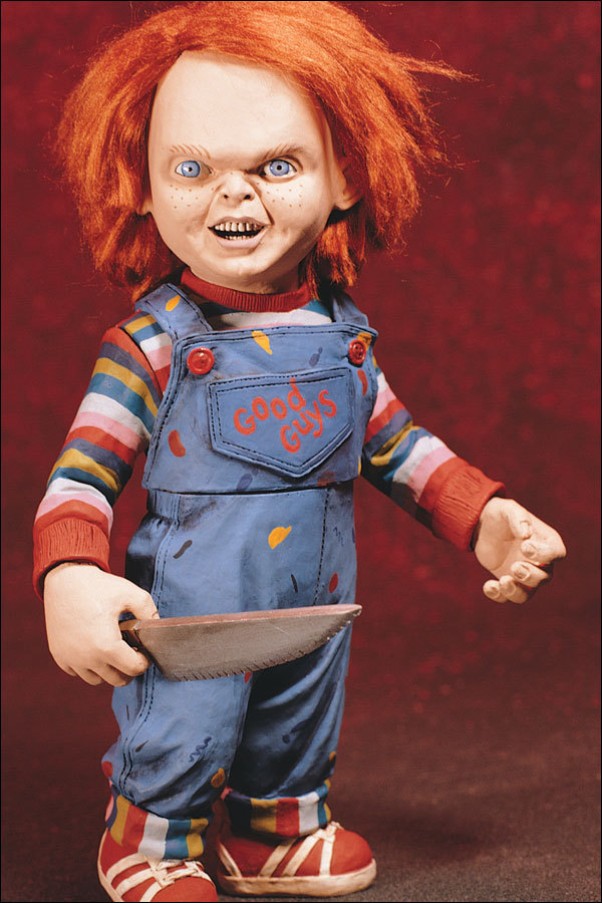
Child's Play is a 1988 American horror film written by Don Mancini and directed by Tom Holland. It stars Chris Sarandon and Brad Dourif, who were both nominated on the same year in 1975 for an Academy Award for Best Supporting Actor. It was released on November 9, 1988. The film met with moderate success upon its release, and has since developed a cult following among fans of the horror genre. The film is the first in the Child's Play film series, which was originally a whodunit film in contrast to the latter sequels. This was the only film in the series released by MGM/UA, as the rights to the series were sold to Universal beginning with the sequel, which along with the other sequels begins to become more obviously comical as it have more of a standard concept with a tongue-in-cheek approach that combined straightforward scares with dialogue that satirized slasher films.
This is the words that give Chucky life.
Original:
Ade due damballa.
Give me the power, I beg of you.
Leveau mercier du bois chaloitte.
Secoise entienne mais pois de morte.
Morteisma lieu de vocuier de mieu vochette.
Endenlieu pour du boisette damballa!
translation:
To the almighty Damballa
give me the power i beg of you!
from the mercy of my soul
to the point of my death
hear me from my comdemed voice
deport me from the body Damballa
This is one of my favorit. Puppet Master.

Puppet Master (also known as Puppetmaster and Puppet Master I) is a 1989 horror film written by Charles Band and Kenneth J. Hall, and directed by David Schmoeller. It is the first film in the Puppet Master franchise and stars Paul Le Mat, Irene Miracle, Matt Roe and Kathryn O'Reilly as psychics who are plotted against by a former colleague, using puppets animated by an Egyptian spell. The film's cult status has led to the production of nine sequels. Originally intended for theatrical release in summer 1989, before being released on home video the following September, Puppet Master was ultimately pushed to a direct-to-video release on October 12, 1989, as Charles Band felt he was likely to make more money this way than he would in the theatrical market.
As long as we keep these wonderful people in our minds, and in our harts they will never die.
I will post up more of the, THE BEST VENTRILOQUIST OF YESTERDAY as I find them. If you know were I can find any more. Please let me know so I can update this websits. Thanks.